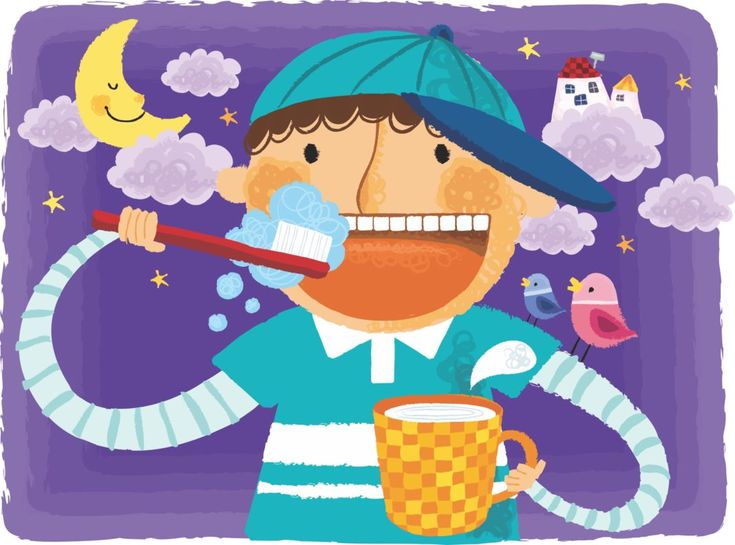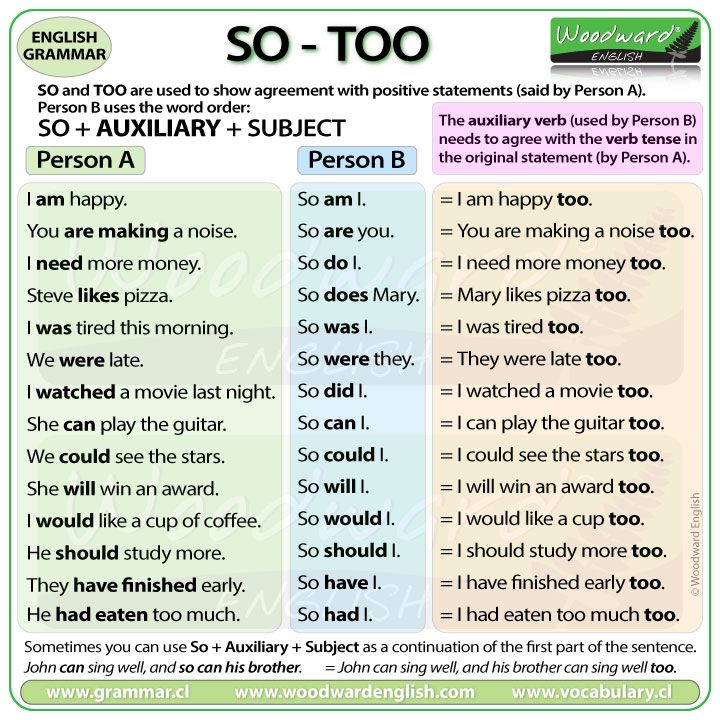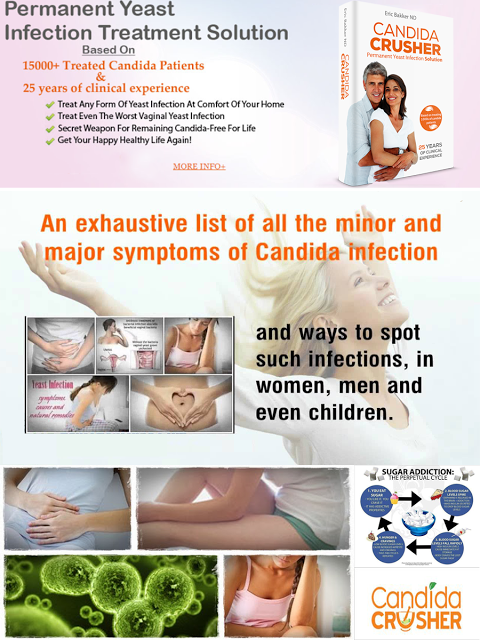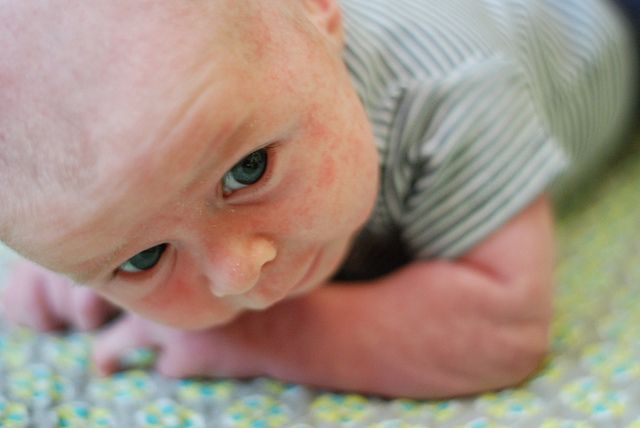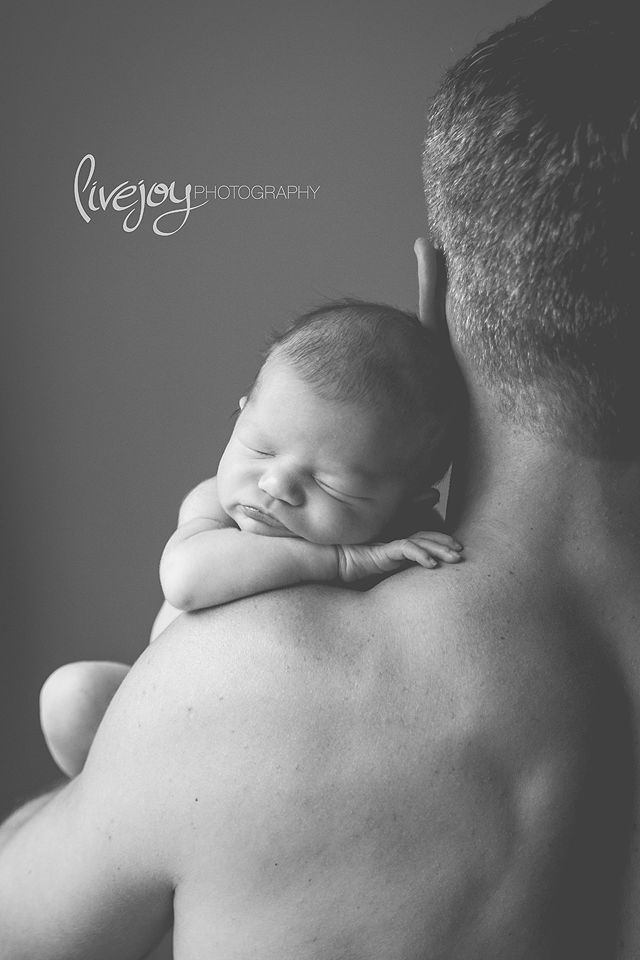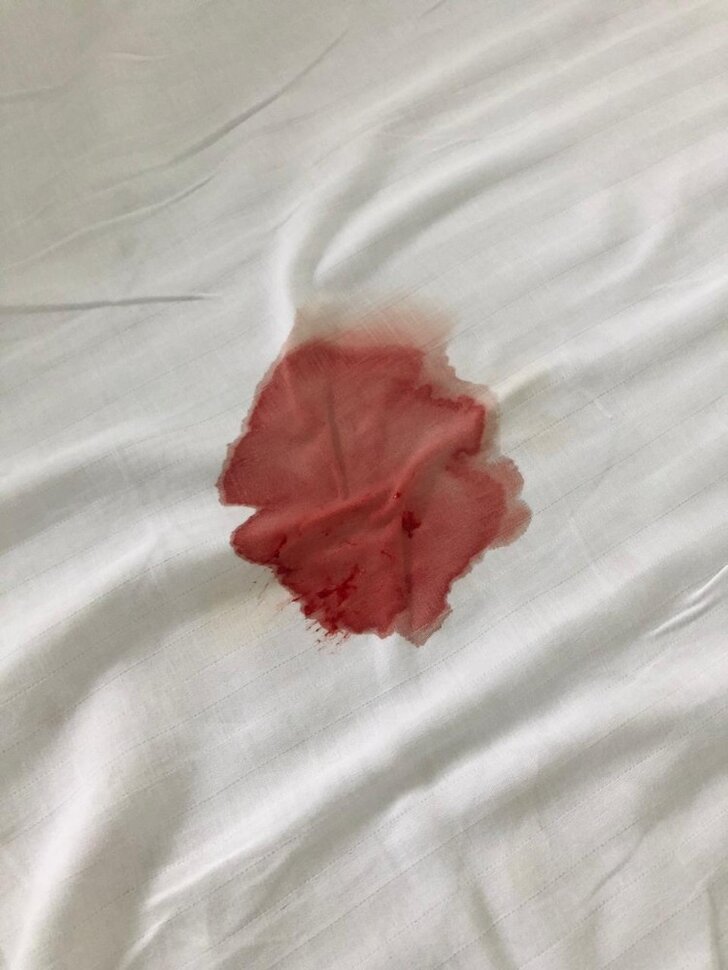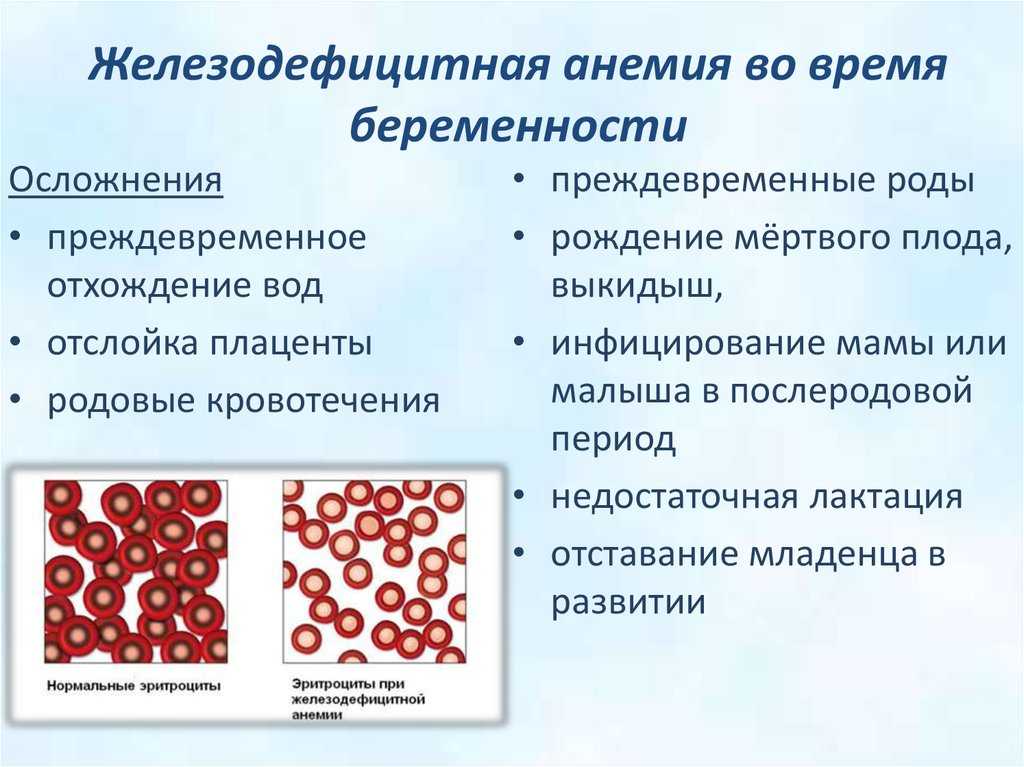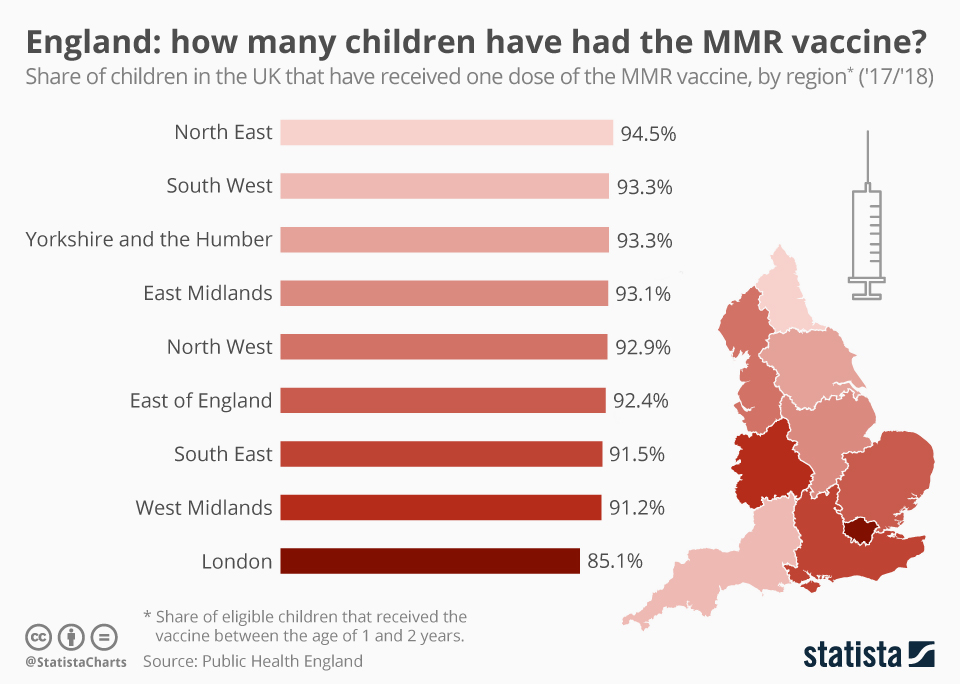How do you teach a child to brush their teeth
5 Tips for Teaching Kids to Brush
In a child’s eyes, brushing teeth is something that can be quite scary, as it’s a new experience. The best approach to teaching your child to enjoy brushing their teeth is to remove the negative stigma associated with it. Rather than making it a chore, the idea is to make cleaning their teeth a fun and enjoyable experience.
When children brush their teeth, there are a few tips and tricks you can use to teach them how to brush in an enjoyable manner!
1. Start Brushing at an Early Age
If you want your children to learn how to properly brush their teeth, then it’s important that you begin teaching them at a young age. By starting early, your children will become comfortable with the concept of brushing on a regular basis. The idea is to work together with your children to develop a convenient routine.
Once you have a good routine established, you should thoroughly explain the importance of brushing. It’s important to teach kids about cavities, bad breath, and tooth decay. Children don’t want harmful germs in their mouths!
Throughout the entire process, you should remind your child that brushing will lead to a beautiful smile. If you start at an early age, then they’ll know no different and be more willing to brush.
2. Brush Along With Them and Make It Fun
Although it may be easier said than done, try to make brushing a fun experience. As we know, our children love to copy everything that we say and do. So, brush along with them!
You should grab your toothbrush and enjoy the brushing routine together. This is also a great approach to ensure that everyone is brushing their teeth for the correct amount of time. You might even consider making a game out of it.
It is a good idea to grab a timer and set it for 2 minutes. During those two minutes, as you brush along with them, compete to see who can make the most toothpaste bubbles.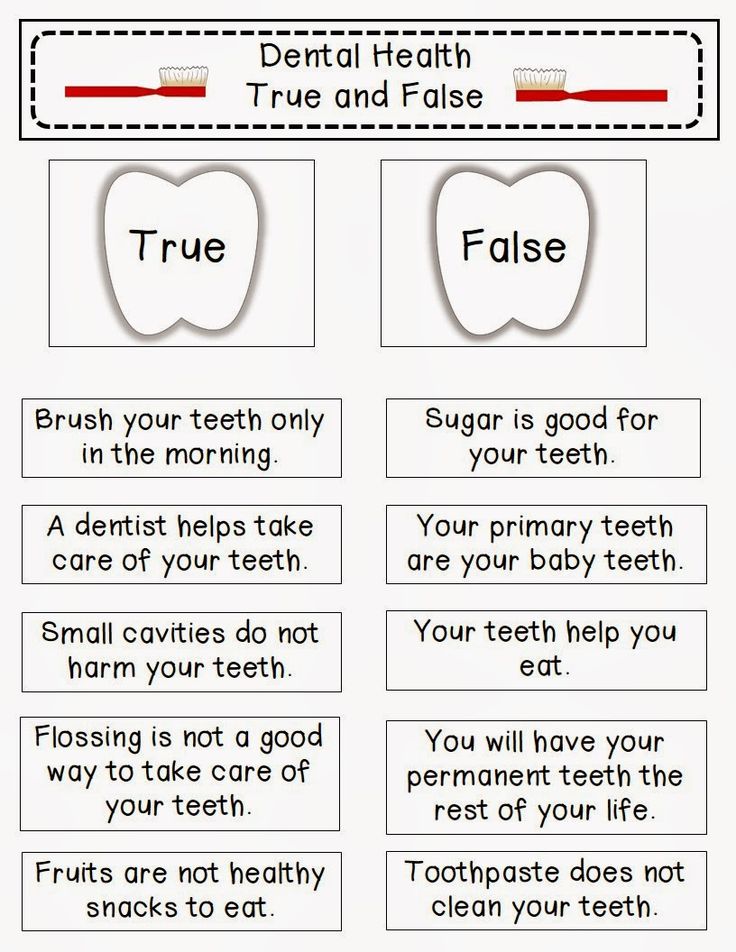 You might also consider having a smiling contest in the mirror after rinsing or enjoying other entertaining “brushing” games.
You might also consider having a smiling contest in the mirror after rinsing or enjoying other entertaining “brushing” games.
3. Let Them Pick Out Their Toothpaste and Toothbrush
Luckily, many brands of toothbrushes and toothpaste have products geared toward children. Regardless which brand is your favorite, there are sure to be pediatric products made by that same brand. It is a good idea to take your little ones to the store with you and allow them to choose their own toothbrush and toothpaste.
With so many fun color patterns, flavors, and favorite characters on the labeling, it is often difficult to select just one. In fact, it can be helpful to have them pick out a couple of different toothbrushes or types of toothpaste, so they have the option of switching it up here and there.
You may also find that some flavors of toothpaste aren’t as enjoyable as many children anticipate when making decisions. This is another reason why it might be a good idea to have them select several different flavors.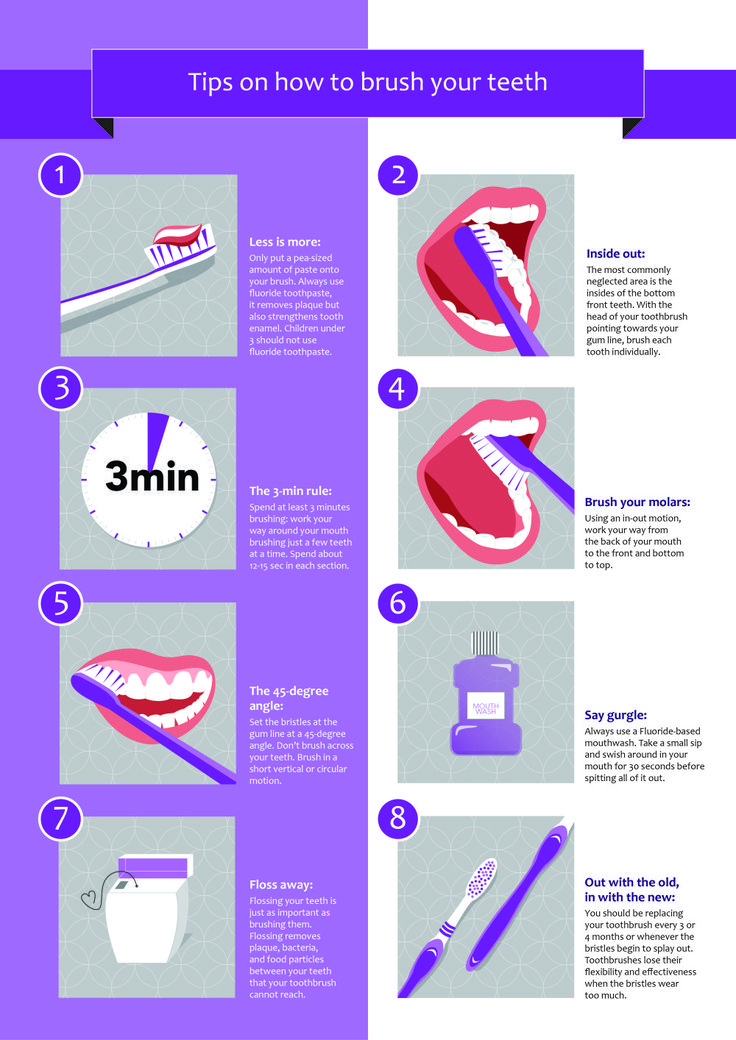 If the bubblegum flavor isn’t a hit, then pull out the berry-flavored one!
If the bubblegum flavor isn’t a hit, then pull out the berry-flavored one!
Spinning toothbrushes can be especially fun for children and they are effective at scrubbing those little teeth. There are even some brushes that play music or silly tunes before turning off at the 2 minute mark, signaling to your children that they’ve completed their brushing time.
4. Compliment Their Brushing Skills
Perhaps nothing motivates children more than having a cheerleader by their side, especially when that cheerleader is their parent. This is why it’s so important to compliment your children’s brushing skills and encourage them to brush twice a day on a routine basis.
Don’t worry about the mess they might make getting toothpaste on the counter or in the sink. The idea is to focus on allowing kids to do everything themselves and cheering them on as they do so. Positive reinforcement is a great way to ensure that children carry this good dental hygiene routine with them for the rest of their lives. You might want to consider placing a chart on the wall and placing stickers next to their names after they brush twice a day and when they floss.
You might want to consider placing a chart on the wall and placing stickers next to their names after they brush twice a day and when they floss.
5. Choose the Right Dentist
Selecting the right dental provider is another crucial step in teaching your children about good dental hygiene. Asking your children’s dentist to give them a thumbs up for brushing by themselves is an awesome way to encourage them. It’s one thing to get the thumbs up of approval from your parent, but it’s a whole other ball game when you receive encouragement from an authority figure dressed in a white jacket.
The right dental provider will also provide you with feedback on other tips and tricks during your visits. He/she should find ways to make your children’s visits to the dentist fun and stress-free.
Brushing your teeth doesn’t have to be a dreadful experience in your household anymore! Keep these pediatric brushing tips and tricks in mind to teach your little ones how to brush their teeth on their own and actually have fun! Even if your children haven’t grown their own teeth yet, you can still get them comfortable with the idea by allowing them to watch you brush your teeth.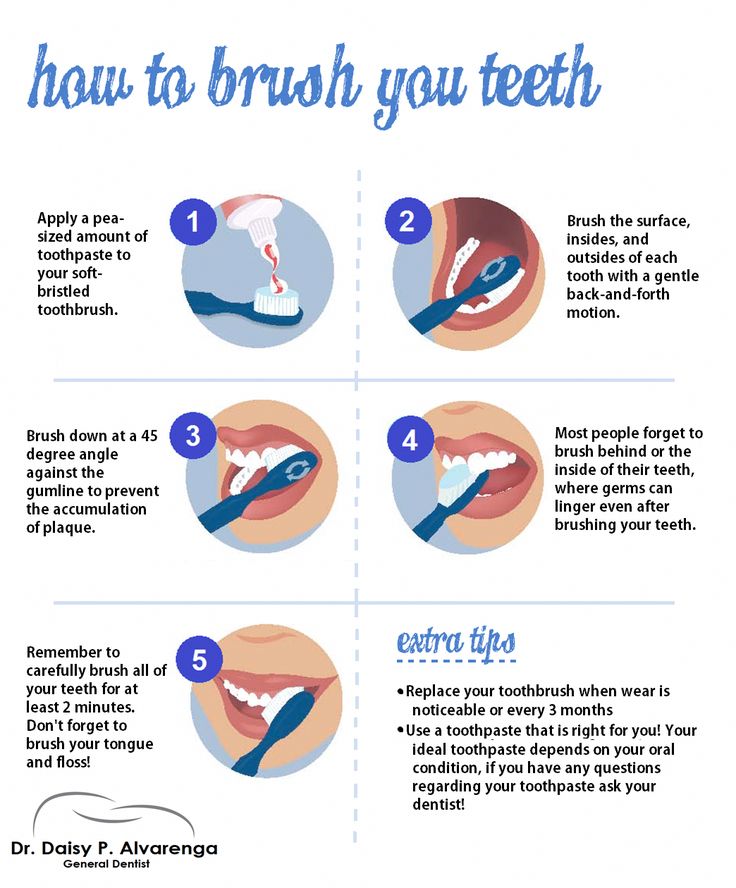
When your children’s teeth do begin to develop, it’s important to schedule visits to a dentist regularly. For an experienced dentist dedicated to giving you and your children the smile you all deserve, contact Pediatric Dentistry of Burke, and schedule your appointment today!
8 Tips for Teaching Kids to Brush Their Teeth
We’ve covered everything from how to make brushing teeth fun to ways to get kids to brush their teeth for two full minutes but what about how to actually teach children the mechanics of brushing their teeth? Little ones aren’t born knowing how to wield a toothbrush. It’s something they need to learn and practice over time in order to effectively banish plaque and keep their teeth and gums healthy. Yet, for adults, it’s easy to take knowing how to brush your teeth for granted and it can seem surprisingly tough to show another person how to do it properly.
Well, as a Naperville pediatric dentistry practice, educating parents and little patients on oral hygiene is our specialty! We’re sharing 8 tips for teaching kids to brush their teeth:
Give Yourself a Refresher on Proper Tooth Brushing Technique
After brushing your teeth for decades, you probably don’t put much thought into exactly what the process entails.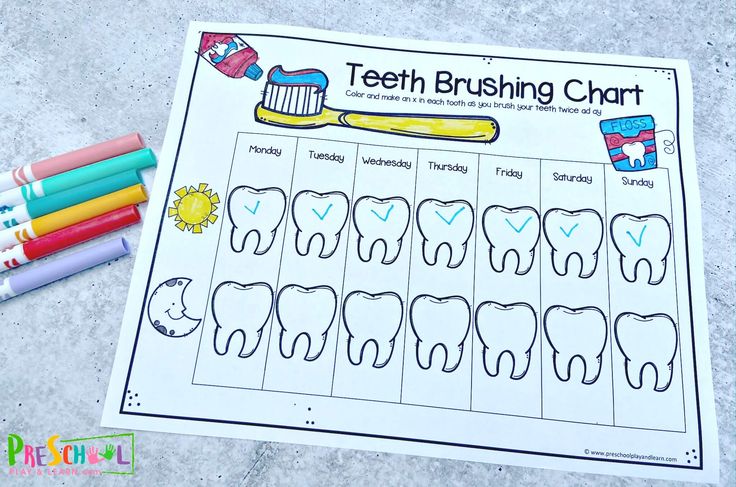 This can make it hard to explain or demonstrate how to brush your teeth for kids. Refresh your own knowledge before teaching kids to brush their teeth. Here are some of the basics of proper tooth brushing technique:
This can make it hard to explain or demonstrate how to brush your teeth for kids. Refresh your own knowledge before teaching kids to brush their teeth. Here are some of the basics of proper tooth brushing technique:
- Hold the toothbrush against the gum line at a 45-degree angle.
- Move the toothbrush gently back and forth in small strokes.
- Start at the gumline and brush all the way down to the chewing surface of the tooth.
- Brush the outer, chewing and inner surface of the tooth.
- When cleaning the inside of the front teeth, turn the brush so that it’s vertical and use short up-and-down strokes.
- Brush each individual tooth during every brushing session.
- Brush your teeth for two minutes each time.
- When you finish bruising your teeth, brush the tongue from back to front.
Start By Brushing Kids’ Teeth for Them
Young children don’t have the fine motor skills necessary to brush and floss their own teeth effectively. While not one of the most fun ways to teach kids to brush their teeth, brushing for them is necessary for the first few years. Start brushing your baby’s teeth as soon as the first tooth erupts using a soft, infant-sized toothbrush and a tiny smear of fluoride toothpaste, no larger than a grain of rice. Floss their teeth once a day when any two teeth are touching.
While not one of the most fun ways to teach kids to brush their teeth, brushing for them is necessary for the first few years. Start brushing your baby’s teeth as soon as the first tooth erupts using a soft, infant-sized toothbrush and a tiny smear of fluoride toothpaste, no larger than a grain of rice. Floss their teeth once a day when any two teeth are touching.
As you floss or brush your baby’s teeth, explain what you’re doing aloud. Yes, it can feel silly narrating but talking through what you’re doing and why will build the foundation and you might be surprised at how much your child internalizes..
Demonstrate on Yourself
Demonstrate how to brush your teeth for kids by brushing your own teeth in front of them using good brushing technique. Again, tell kids what you’re doing and why. Keep the demonstration upbeat, positive and fun. Even if brushing your teeth isn’t your favorite thing to do, pretend it is. Enthusiasm is key because it can rub off on your child and make them more excited about oral hygiene.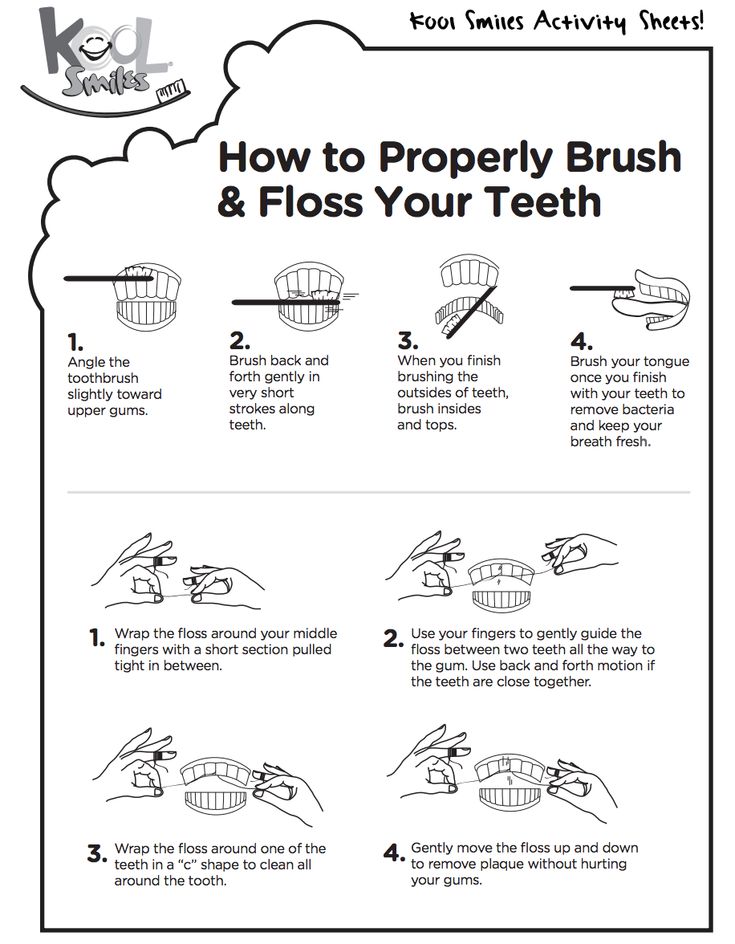
Let Kids Try Brushing Their Teeth on Their Own
Once your toddler or preschooler is able to hold the toothbrush correctly, let them try to brush their own teeth in front of a mirror. Most children learn best by doing. However, again, little kids don’t have the dexterity to effectively brush all of their tooth surfaces and it’s recommended parents supervise teeth brushing until children are around seven or years of age. So, have your child brush their own teeth first while you watch and then do a quick follow up if necessary to eliminate any lingering plaque. Using a mirror will help keep them on task and let them see what they’re doing. Kids who don’t brush their teeth on their own at all will have a harder time picking up the technique when they’re older.
Use the Correct Tools
Using a children’s toothbrush and tasty, kid-friendly toothpaste will go a long way in helping kids learn to brush their teeth. A child-sized toothbrush will fit in their mouth and be much more comfortable and easier for them to maneuver. A fun kid’s toothbrush will also get them excited and when they like the taste of their toothpaste, there is usually less of a struggle.
A fun kid’s toothbrush will also get them excited and when they like the taste of their toothpaste, there is usually less of a struggle.
Aside from a children’s toothbrush and toothpaste, consider a toothbrushing timer app or an old-fashioned timer. It can be hard for kids to gauge what two minutes is (hey, it can be hard for adults too!). A timer or toothbrushing timer app will make things easier because it will alert kids when their two minutes of brushing is up.
Watch Teeth Brushing Videos for Kids
Watching a brushing teeth video for kids is great for visual learners. Children can see the correct tooth brushing technique in action and then replicate it on themselves. A quick search on YouTube will turn up a ton of teeth brushing videos for kids that are educational and entertaining.
Brush Your Teeth Together
Brushing together is another of the fun ways to teach kids to brush their teeth. Make a big deal out of brushing time and turn it into a family bonding activity.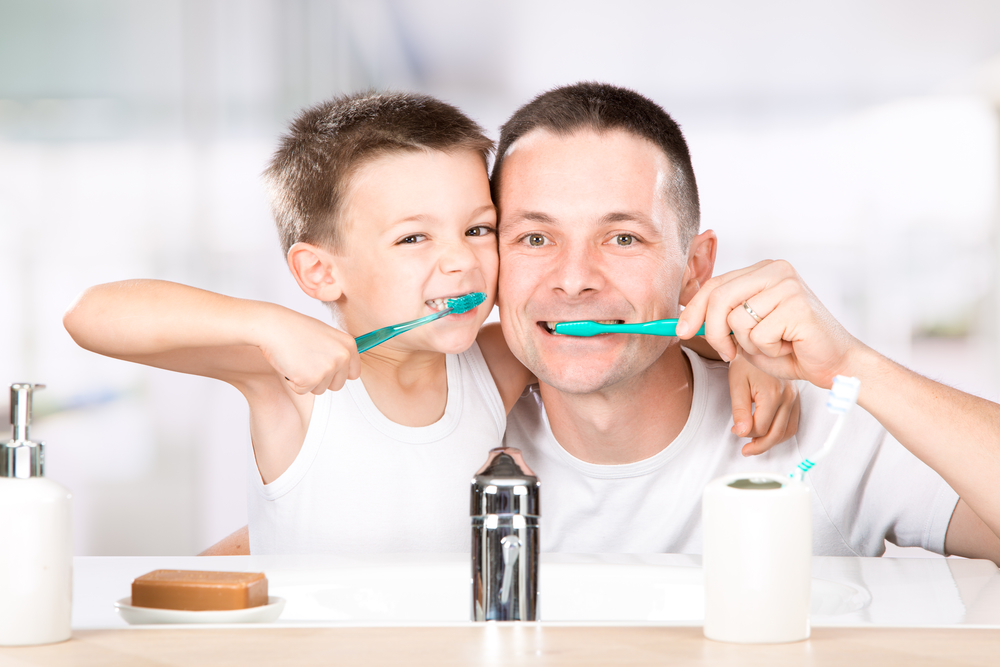 Have your child mimic what you do and use the same technique, so that while they’re having a blast, they’re also learning how to brush correctly.
Have your child mimic what you do and use the same technique, so that while they’re having a blast, they’re also learning how to brush correctly.
Practice on Stuffed Animals or on DIY Teeth
We all know practice makes perfect and when it comes to learning how to brush your teeth for kids, the same holds true. If your child has a doll or stuffed animal with teeth, have them brush the toy’s teeth.. Walk them through how to do it and offer plenty of encouragement when they use proper technique.
If they don’t have a toy with teeth that can be brushed, you can make some faux pearly whites. Play Based Parenting has a great tutorial for making DIY teeth for children to practice brushing on using old yogurt containers. Demonstrate how to brush teeth for kids on the yogurt container “teeth” and then let them practice getting the teeth sparkling clean.
We hope these tips for how to teach your kids to brush their teeth are helpful. If after trying them, your child is still having trouble brushing their teeth or just doesn’t like to do it, let us know and we can help.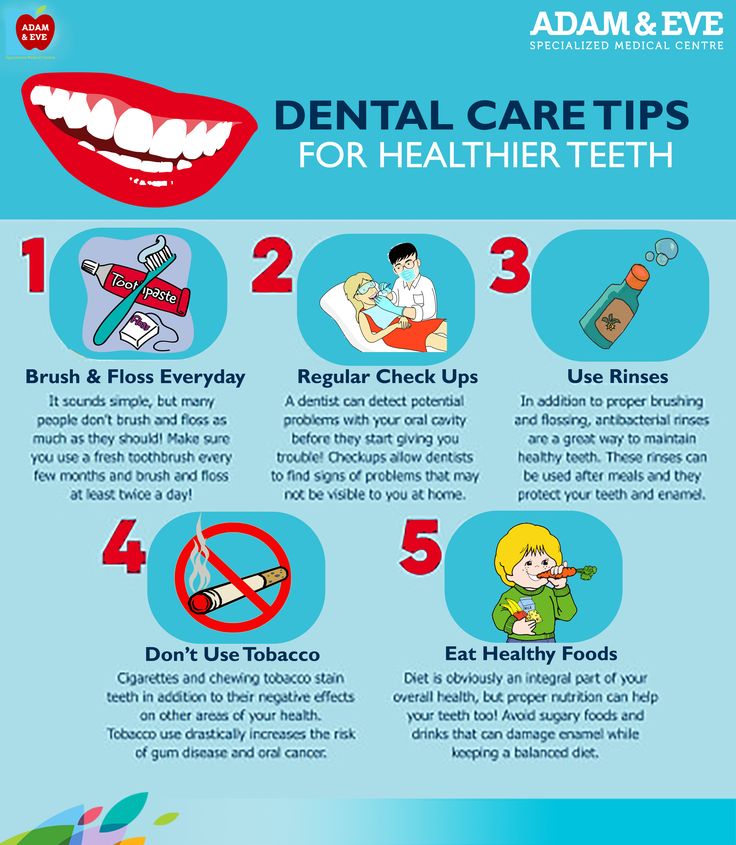 Our Naperville kids’ dentists are experts in helping families develop amazing homecare routines that will keep little teeth healthy and strong. To schedule a visit, call us at (630) 848-7336 today!
Our Naperville kids’ dentists are experts in helping families develop amazing homecare routines that will keep little teeth healthy and strong. To schedule a visit, call us at (630) 848-7336 today!
7 easy ways to teach your child to brush their teeth
Be an example to them
Stand next to your child in front of the bathroom mirror and brush your teeth together. It's actually a nice time together. Children love to imitate, they notice everything and try to repeat, so the family needs to use a personal example to teach brushing techniques. Make it a habit to brush your teeth with your child every night before you go to bed and in the morning after breakfast, and do it with pleasure. They will remember and automatically do it themselves, even if you are not around.
Buy fun toothbrushes for kids
There are a huge number of children's toothbrushes in stores. Choose a toothbrush that is small enough for your child to comfortably hold.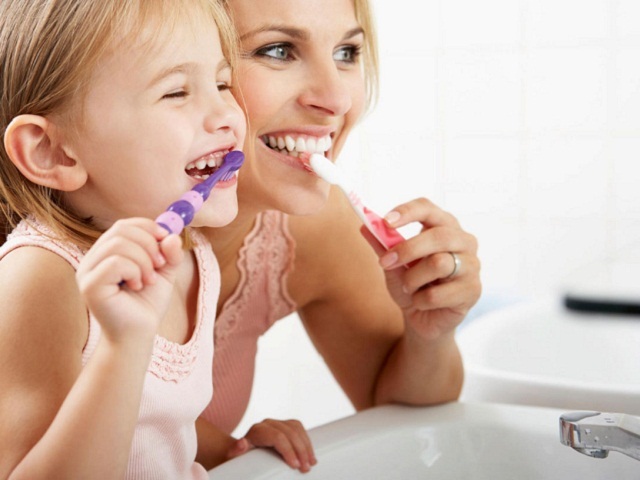 Preferably, the brush should have a small round head and very soft bristles. Adults must help children brush their teeth. When the baby grows up and can cope on his own, the brush handle will change to a voluminous and comfortable grip. It is advisable to have at least two toothbrushes with different colors of handles and bristles - one for brushing your teeth in the morning after breakfast, the second for brushing your teeth in the evening before going to bed. Toothbrushes need to be changed every 3 months. By the way, electric brushes are allowed only for children who have reached school age.
Preferably, the brush should have a small round head and very soft bristles. Adults must help children brush their teeth. When the baby grows up and can cope on his own, the brush handle will change to a voluminous and comfortable grip. It is advisable to have at least two toothbrushes with different colors of handles and bristles - one for brushing your teeth in the morning after breakfast, the second for brushing your teeth in the evening before going to bed. Toothbrushes need to be changed every 3 months. By the way, electric brushes are allowed only for children who have reached school age.
Buy delicious, safe toothpaste
Children under six should only use special children's toothpaste; older than six years - you can use family pastes. Toothpastes for children are subject to increased safety requirements in case of ingestion. This is due to the fact that children under a certain age do not know how to rinse their mouths and swallow part of the toothpaste when brushing their teeth.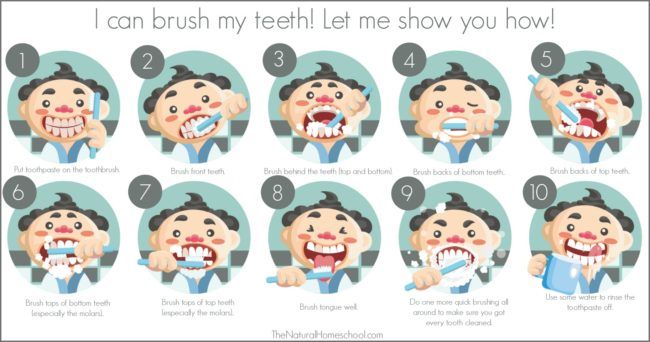 Therefore, toothpastes are produced for them, which, if they enter the gastrointestinal tract, will not have a toxic effect on the body, in particular, toothpastes with a low fluoride content. According to the requirements of regulatory documentation in the paste for children under six years of age, the fluoride content should be no more than 0.05%.
Therefore, toothpastes are produced for them, which, if they enter the gastrointestinal tract, will not have a toxic effect on the body, in particular, toothpastes with a low fluoride content. According to the requirements of regulatory documentation in the paste for children under six years of age, the fluoride content should be no more than 0.05%.
Count your teeth when brushing
Firstly, children will learn to count, and secondly, they will have fun, combining business with pleasure.
Watch, check, reward!
A simple calendar placed in your child's room can also go a long way towards forming a positive habit. There are many options for ready-made calendars for children - with large numbers, bright, even thematic ones - with drawings of teeth and how to clean them properly. When you mark on your calendar the day your child brushes their teeth without prompting, you provide a visual signal of approval for their actions, exercise control, and positively reinforce the habit that is forming.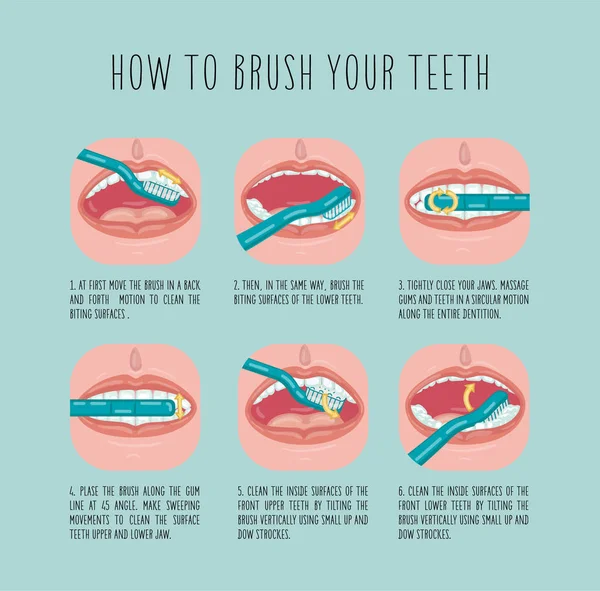 Or you can draw a bright poster together with your child and let your child stick a funny sticker on it after each brushing.
Or you can draw a bright poster together with your child and let your child stick a funny sticker on it after each brushing.
Tell a funny story about brushing your teeth
Children love hearing funny and interesting stories over and over again. Come up with a short fairy tale about a brush fairy that drives away evil microbes, the training will go with a bang!
Make up a funny song about brushing your teeth
Make up a funny song to sing every time you brush your teeth. You can use the motive of well-known songs. The easier the song, the better they will be able to remember it, and the better they will brush their teeth.
Author - head of the dental department S.V. Rubtsova
How to teach a child to brush their teeth
How to teach a child to brush their teeth
What is the need for oral hygiene of the baby when the teeth are just starting to grow? Is milk caries so terrible, because they will be replaced by molars? How to cope with children's horror in front of the dentist's office? Such questions give rise to different opinions about the age at which a child should be taught to brush their teeth regularly: from 2, 3.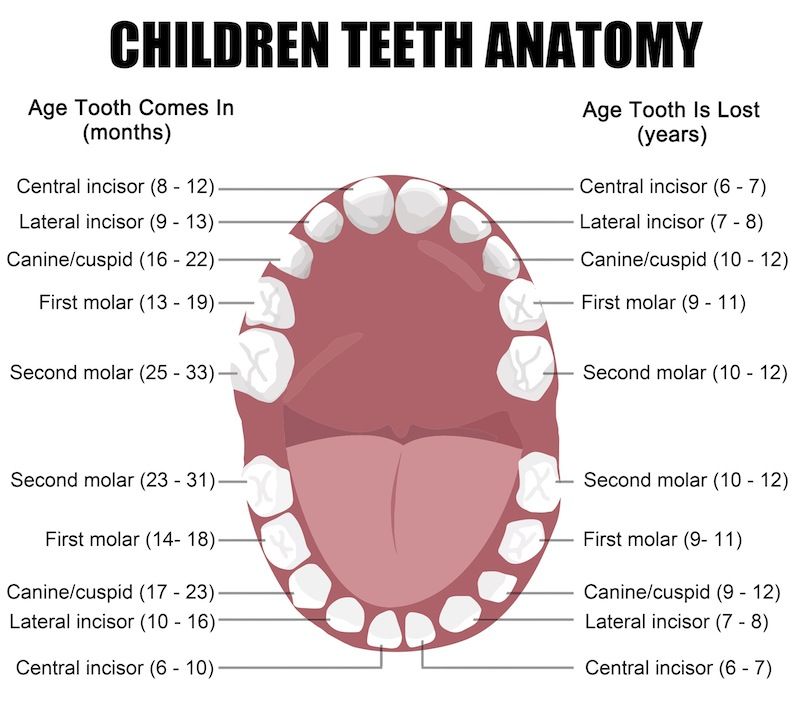 5, or from the moment the first permanent teeth erupt - at 6-7 years.
5, or from the moment the first permanent teeth erupt - at 6-7 years. Strictly speaking, the baby should be introduced to hygiene habits even before the first tooth erupts. This is necessary for educational and pedagogical purposes. If a baby from infancy is accustomed to regular oral hygiene, then at the right time, he will, easier than his peers, switch to independent use of a toothbrush and paste. But this is how you understand the ideal. If you aspire to it, let's start caring for your child's teeth from birth!
From birth to permanent teeth
It is very important to keep the first teeth healthy, even though after about four years they will still be replaced by permanent ones. Milk teeth are involved in the development of speech, promote proper digestion and the formation of the gastrointestinal tract. By chewing solid food, they help develop a normal bite, "keep room" for permanent teeth. Children's teeth are vulnerable to cavities, which are caused by bacteria that multiply in the plaque that constantly builds up on the teeth from food debris. If caries appeared on milk teeth, then with a high probability it will pass to permanent ones, sometimes already at the stage of their formation. In this case, the "irreplaceable" tooth will erupt already sick. It is desirable that the appearance of new teeth occurs under the supervision of a specialist. If you go to the dental offices as a preventive measure, you will be able to prevent many problems. It is better to be treated not when it hurts, but so that it does not get sick.
If caries appeared on milk teeth, then with a high probability it will pass to permanent ones, sometimes already at the stage of their formation. In this case, the "irreplaceable" tooth will erupt already sick. It is desirable that the appearance of new teeth occurs under the supervision of a specialist. If you go to the dental offices as a preventive measure, you will be able to prevent many problems. It is better to be treated not when it hurts, but so that it does not get sick.
Teething is a physiological process, which is characterized by certain terms, pairing (symmetry) and a special order of appearance of teeth. Usually, the teeth on the lower jaw erupt earlier, in boys a little later than in girls. The timing of their appearance is quite individual, although it is possible to determine the approximate time of eruption of milk teeth:
- central incisors - 6-10 months;
- lateral incisors - 10-14 months;
- fangs - 16-20 months;
- second molars (chewing teeth) - 20-30 months;
- by 2.
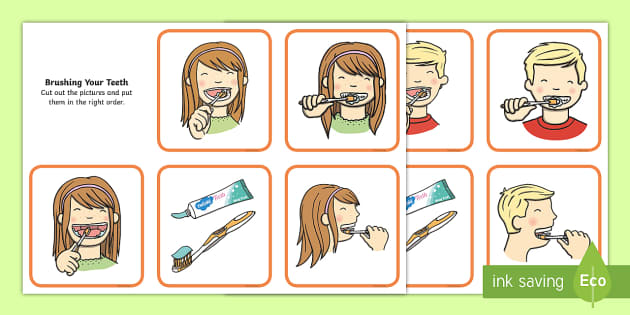 5-3 years, as a rule, all teeth erupt;
5-3 years, as a rule, all teeth erupt; - at the age of 6-7, a change in bite begins - milk teeth fall out, giving way to permanent ones;
- by the age of 13, all teeth change to permanent ones, only the most distant ones - the third molars or wisdom teeth erupt at an older age.
At this time, you can start preparing for the first tooth. It is not often that a child goes through this stage asymptomatically. Much more common are cases when a child is worried about pressure under the gum. The baby becomes irritable, sleeps badly, refuses to breastfeed or, on the contrary, does not “get off” from it, his salivation increases, the gum in the corresponding place turns red, swells, and becomes sensitive. Sometimes teething is accompanied by fever, vomiting and loose stools. Such ailments can be repeated again and again, with each emerging tooth. At the same time, the child himself tries to alleviate his condition, pulls his fingers into his mouth and bites hard objects.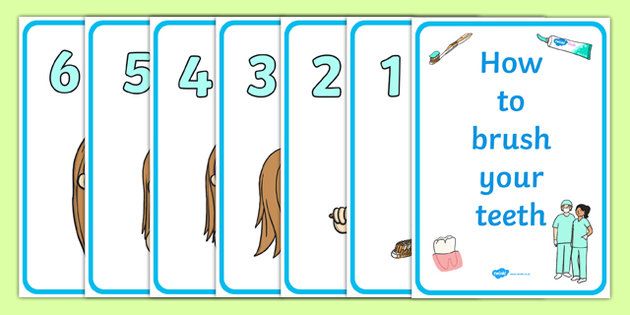 This ailment will help alleviate chewing an orris root or a crust of bread (drying option), massaging the gums with a finger or a rubber teether. There are special preparations in the form of gels (Kalgel, Mundizal gel, Dentinox gel), which are applied to the gums and facilitate the process of teething. True, they save for a short period and are more effective before bedtime than during the day, and they can be used a strictly limited number of times per day. The baby in this situation needs increased attention and, of course, careful care of the oral cavity. Oral hygiene in young children is performed on the hands of an adult, in the same position as when feeding from a bottle. After eating, at least 30 minutes should pass to avoid spitting up food. Wash your hands, then wrap your index finger tightly with gauze moistened with warm boiled water, gently put it in your mouth and massage your gums in a circular motion.
This ailment will help alleviate chewing an orris root or a crust of bread (drying option), massaging the gums with a finger or a rubber teether. There are special preparations in the form of gels (Kalgel, Mundizal gel, Dentinox gel), which are applied to the gums and facilitate the process of teething. True, they save for a short period and are more effective before bedtime than during the day, and they can be used a strictly limited number of times per day. The baby in this situation needs increased attention and, of course, careful care of the oral cavity. Oral hygiene in young children is performed on the hands of an adult, in the same position as when feeding from a bottle. After eating, at least 30 minutes should pass to avoid spitting up food. Wash your hands, then wrap your index finger tightly with gauze moistened with warm boiled water, gently put it in your mouth and massage your gums in a circular motion.
Moms already have the first oral hygiene items in their arsenal, designed specifically for babies.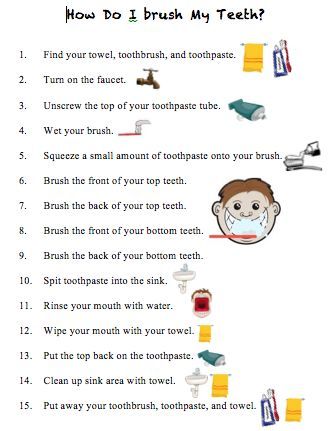 To alleviate the painful condition, you can use a teething brush with a safety disc. It will relieve discomfort when the first teeth appear and help develop the skills of brushing them. With its help, the kid gets used to the toothbrush, holds it on his own, chews, massaging his gums, and already without fear relates to his mother's "invasion" in his mouth. The safety disc on the brush handle prevents possible injury.
To alleviate the painful condition, you can use a teething brush with a safety disc. It will relieve discomfort when the first teeth appear and help develop the skills of brushing them. With its help, the kid gets used to the toothbrush, holds it on his own, chews, massaging his gums, and already without fear relates to his mother's "invasion" in his mouth. The safety disc on the brush handle prevents possible injury.
For the first oral care and gum massage, when the teeth have not yet erupted, the "Finger Toothbrush" is well suited - a special silicone cap with very soft bumps that mom puts on her index finger.
Teeth of a child 8-11 months old
At this age, incisors appear. The baby still eats liquid or viscous food, which easily lingers in the folds of the mucous membrane and sticks to the teeth. Such nutrition does not contribute to the self-cleaning of the oral cavity, which so far occurs only with the help of saliva. Therefore, help your child get rid of plaque with a baby brush with special rubber bristles.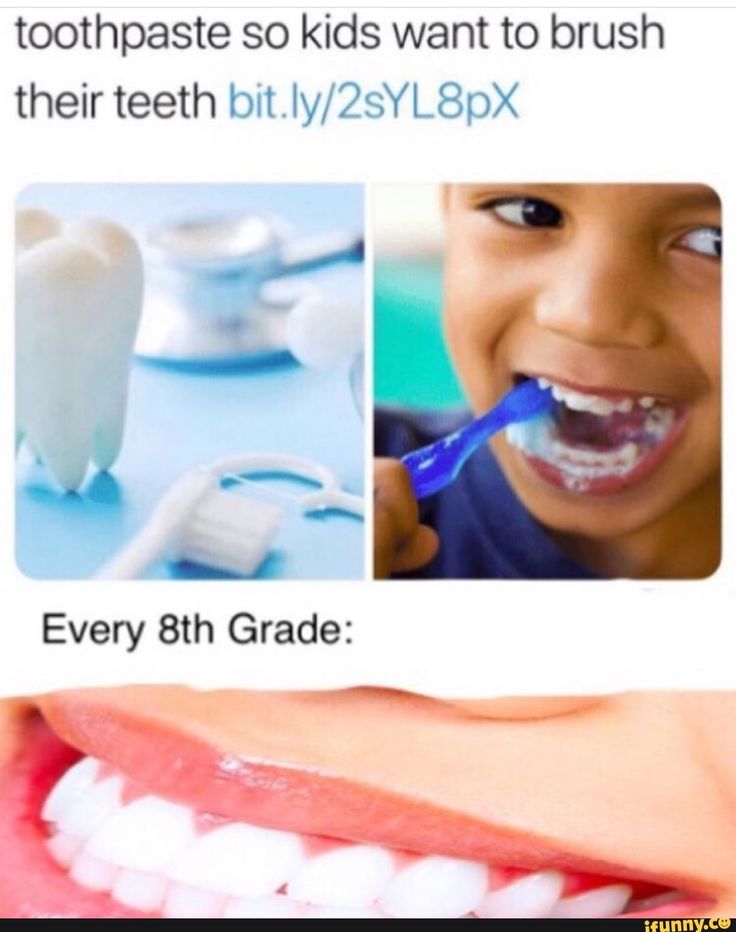 Brush correctly: upper teeth - the brush moves down from the gums, lower teeth - the brush moves up from the gums, where the teeth of the upper and lower jaws meet - the brush moves horizontally. Massage your gums in circular motions on both sides. All actions must be extremely careful, sparing, so as not to injure the delicate, very thin mucous membrane of the child's oral cavity.
Brush correctly: upper teeth - the brush moves down from the gums, lower teeth - the brush moves up from the gums, where the teeth of the upper and lower jaws meet - the brush moves horizontally. Massage your gums in circular motions on both sides. All actions must be extremely careful, sparing, so as not to injure the delicate, very thin mucous membrane of the child's oral cavity.
When your baby tries to imitate you by brushing his teeth, encourage him. Quietly let him move the brush in his mouth a little. Praise even if he only chews or sucks on her. He learns that the toothbrush is for the mouth, not for picking the flower pot, and this is already a great achievement. After the baby has "brushed his teeth", it's the parents' turn to complete the procedure. It is important that the child is fearless about manipulations in his mouth. This will help make the initial examination by a specialist psychologically more comfortable for the baby and not so painful for the dentist.
The first teeth that appear is a reason to show your child to a dentist who will assess the condition of the enamel, identify possible congenital abnormalities, oral diseases caused by malnutrition, metabolic disorders and teach you how to properly brush your baby's teeth.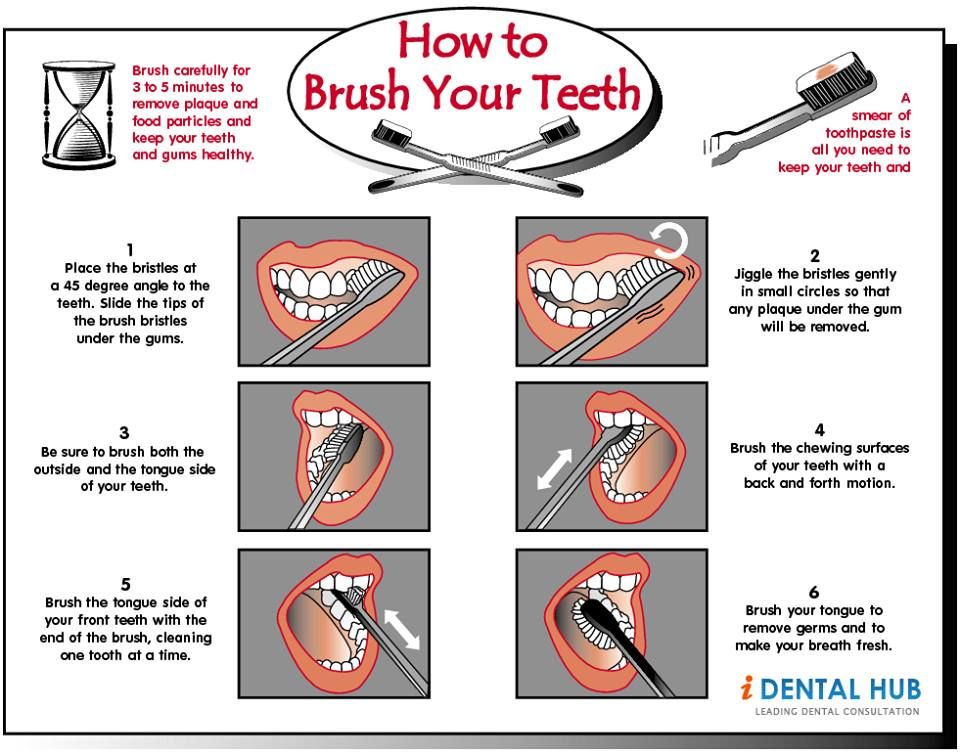
Baby's teeth at 1 year old
Your baby is almost a crocodile. By this time, the baby erupted 8-12 milk teeth. We begin to clean them with a brush with soft artificial bristles. The first experience of using a brush should in no case lead to pain in the baby, so its choice must be approached with special responsibility. The brush should have a small head (no more than 2-2.5 teeth in size) so that it can reach the farthest areas in the cramped cavity of the child's mouth. Soft polyester bristles will help to avoid tears. The handle of a toothbrush intended for a one-year-old baby should be comfortable for the time being, rather for you, since at this stage only adults brush their teeth. The presence of brushes with age marking greatly facilitates the choice of hygiene items: you simply find the brush that matches the age of your baby.
Before first use, be sure to wash the brush thoroughly with warm soapy water. Periodically repeat this treatment after hygiene procedures.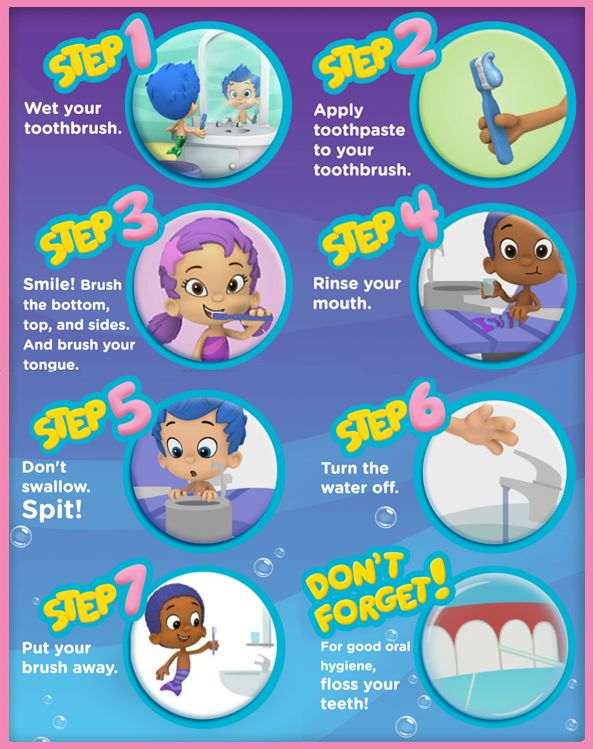 Store your brush upright.
Store your brush upright.
Teeth of a child 12-18 months
The first milk molars - chewing teeth - begin to erupt. Please note that a newly emerged tooth is below the level of the dentition, so ordinary cleaning methods are not enough to remove plaque from it. To clean the chewing surface of this tooth, it is necessary, gently moving the corner of the mouth, position the cleaning surface of the brush perpendicular to the dentition and clean in this position.
As the teeth erupt, the child's diet changes and it becomes especially important to form a diet. Solid food mechanically cleans the teeth, vegetables and fruits cause profuse salivation. Due to the bactericidal properties of saliva in the oral cavity of the child, the number of pathogens is reduced. It is necessary to clean the baby's mouth from food debris after each meal. Enough to give the child to drink boiled water. Especially adverse effects have a sweet food before bedtime. It is impossible for the baby to fall asleep with a lollipop on the cheek. Wean your child to fall asleep with a bottle, especially if it is filled with sweet and sour liquid. This habit leads to the so-called bottle caries and malocclusion.
Wean your child to fall asleep with a bottle, especially if it is filled with sweet and sour liquid. This habit leads to the so-called bottle caries and malocclusion.
This is the age when the baby imitates adults with special pleasure, he easily forms a family ritual of brushing his teeth: first he watches how mom and dad brush their teeth, he learns to hold a toothbrush (without paste), brushes his teeth. To interest the child, you can ask permission to brush his teeth, in exchange for the fact that he brushes the teeth of one of the adults, and also buy a separate brush for his favorite bunny or doll. Just do not leave the baby unattended during these procedures.
For easier brushing of children's teeth, you can stand behind him and raise his head slightly so that you can reach all surfaces of the teeth with the brush. Toothpaste is not used during this period, since the child does not yet have the skills of rinsing the mouth, and the eaten paste sometimes leads to an excess of fluoride in the body.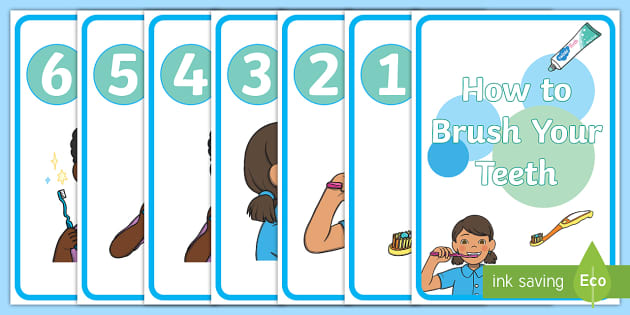 If the robber persistently asks for toothpaste "like mom's", draw his attention to a beautiful brush, in extreme cases, simulating the application of toothpaste "for fun". If the child begins to act up and he loses interest in caring for his teeth, then it is better to postpone the procedure, unobtrusively showing how parents like to take care of their teeth. Most likely, the baby will soon want to join the general lesson. Involvement in hygiene procedures can also take a playful form: "Come on, let's count how many teeth you have!", "How does a hippopotamus open its mouth?".
If the robber persistently asks for toothpaste "like mom's", draw his attention to a beautiful brush, in extreme cases, simulating the application of toothpaste "for fun". If the child begins to act up and he loses interest in caring for his teeth, then it is better to postpone the procedure, unobtrusively showing how parents like to take care of their teeth. Most likely, the baby will soon want to join the general lesson. Involvement in hygiene procedures can also take a playful form: "Come on, let's count how many teeth you have!", "How does a hippopotamus open its mouth?".
Teeth of a 2 year old child
The kid has grown up enough and is quite independent. You can start mastering hygiene procedures on your own. Show parents how to properly use a toothbrush. At the same time, it is important not only to teach how to brush your teeth well and properly, but also to rinse your mouth. First, teach your baby in a playful way to hold and spit out water, "blow bubbles".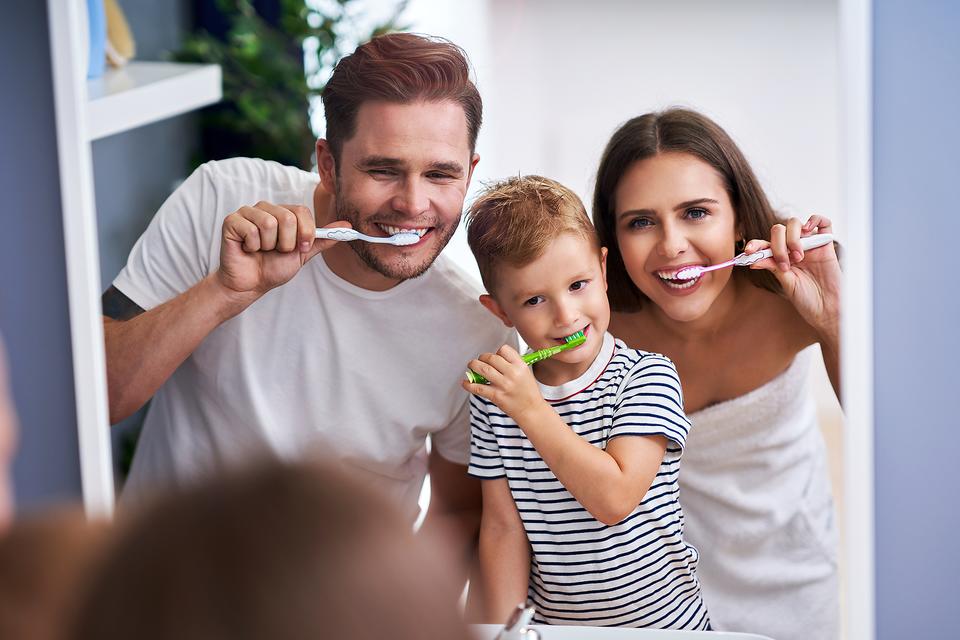 You can trust the independent use of toothpaste when the little man has firmly worked out the skill of rinsing his mouth without swallowing water.
You can trust the independent use of toothpaste when the little man has firmly worked out the skill of rinsing his mouth without swallowing water.
Parents apply toothpaste to children's brushes up to 6 years of age. At first, its amount should be minimal, you just need to lightly touch the bristles with a special baby paste. Almost all children's toothpastes contain very strong fruit flavors that cause children to eat up to 30% of the toothpaste while brushing their teeth. To avoid increased fluoride intake, the fluoride content of these toothpastes is specifically reduced compared to adolescent and adult toothpastes. Estimating the amount of fluoride a child needs is important, since a lack of it contributes to the development of caries, and an excess can lead to impaired enamel formation. On sale there is a huge number of toothpastes for children and adolescents with a different set of properties, but it is better to individually select the paste, with the help of a pediatric dentist. The specialist will help you make a choice based on the age of the child, the condition of his teeth and gums, the fluoride content in drinking water in your area (in our country there are regions with an excess or lack of fluoride in water), evaluate the quality of brushing your teeth, correct possible errors, and, if necessary, perform professional oral hygiene.
The specialist will help you make a choice based on the age of the child, the condition of his teeth and gums, the fluoride content in drinking water in your area (in our country there are regions with an excess or lack of fluoride in water), evaluate the quality of brushing your teeth, correct possible errors, and, if necessary, perform professional oral hygiene.
It is important that brushing your teeth becomes a regular part of your baby's morning and evening routine. The handle of the toothbrush should be thick, as comfortable as possible for the child. It is better to buy a special children's brush, which takes into account the structure of the brush and the characteristics of the grip of a child's hand. Do not fall for the tricks of manufacturers who attract buyers with the design of a children's brush, making a handle in the form of a dragon or a space rocket. It is difficult for a child to hold such a brush, which immediately affects the result of the hygiene procedure.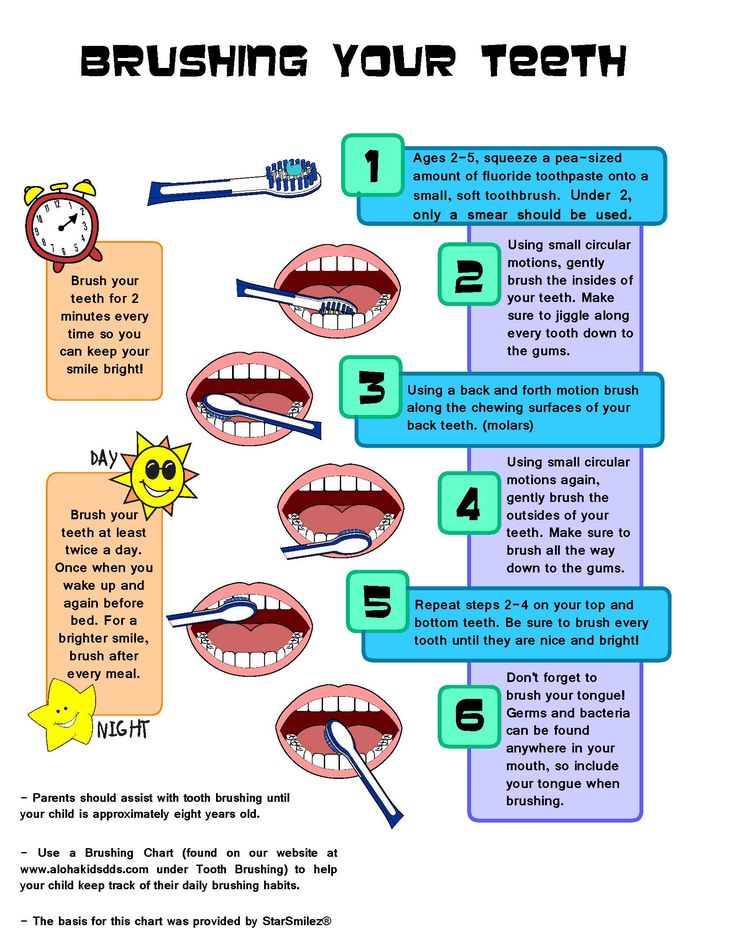 When choosing a brush, be guided by the fact that the correct baby brush in a horizontal position always lies with the bristles up. It is more convenient to use a brush with an expiration indicator - specially colored bristles that lose color when worn, and in older children - help parents determine how well the child brushes their teeth. Other models of brushes should be changed once a month, or even earlier if the bristles have lost their shape.
When choosing a brush, be guided by the fact that the correct baby brush in a horizontal position always lies with the bristles up. It is more convenient to use a brush with an expiration indicator - specially colored bristles that lose color when worn, and in older children - help parents determine how well the child brushes their teeth. Other models of brushes should be changed once a month, or even earlier if the bristles have lost their shape.
A dentist is not a punishment!
It is from the first visit to the dentist that fear of the sound of a working burr machine settles in us for life. Often these fears are unwittingly instilled in their children by parents. It is important to initially form the child's attitude to going to the clinic as an adventure. To do this, prepare the child in advance, talk about the clinic, avoiding the words "injection", "not painful", "not scary". Replace them with the expressions "interesting", "like in the movies", "fun". Give him the impression that going to the dentist is an indispensable, important part of real adult life.
Give him the impression that going to the dentist is an indispensable, important part of real adult life.
Teeth of a 5-7 year old child
During this period, the change of bite begins, the roots of milk teeth are resorbed. Teeth become loose and fall out easily when the time comes. The first permanent teeth appear, those that are in the depths of the mouth are especially susceptible to carious damage.
At the age of 6, a child should already know the rules of brushing his teeth:
- clean hands take a brush, which is first washed with warm running water;
- Toothpaste is applied to the bristles of the toothbrush;
- rinse the mouth thoroughly with warm water;
- and only then should the child proceed to the "standard method" of brushing the teeth, which consists of horizontal, vertical and circular movements, with a predominance of vertical "sweeping" movements;
- in the process of brushing the teeth and at the end of it, the oral cavity is rinsed with warm water;
- the toothbrush is washed with warm running water and placed in a glass with the head up.
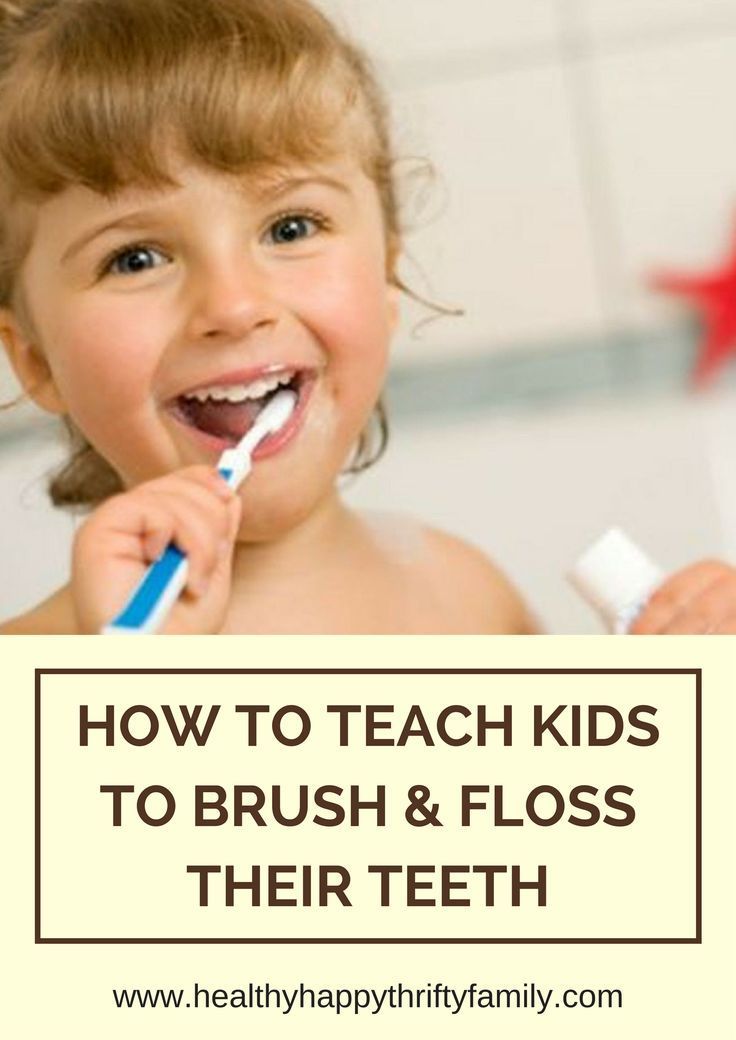
Electric toothbrushes are recommended to be used only after the formation of a permanent bite, that is, when all teeth have been replaced by permanent ones. You can teach your child to clean the gaps between the teeth with a special floss - floss. Their cleaning is necessary, since it is there, in places inaccessible to a conventional toothbrush, that the most intense plaque formation and the development of caries occur. For the same purposes, brushes are used with great efficiency, according to the size of each interdental space. They are selected individually, in the dental office.
Remember that parents should supervise the process of brushing the teeth of a baby up to 8 years old, and in the first years of life, they should do it together. In some cases, adults need to monitor this process even up to the age of 13-14, because due to incorrect actions and lack of motivation, brushing your teeth turns a child into a formal “climbing” on the teeth, from which there is no benefit.